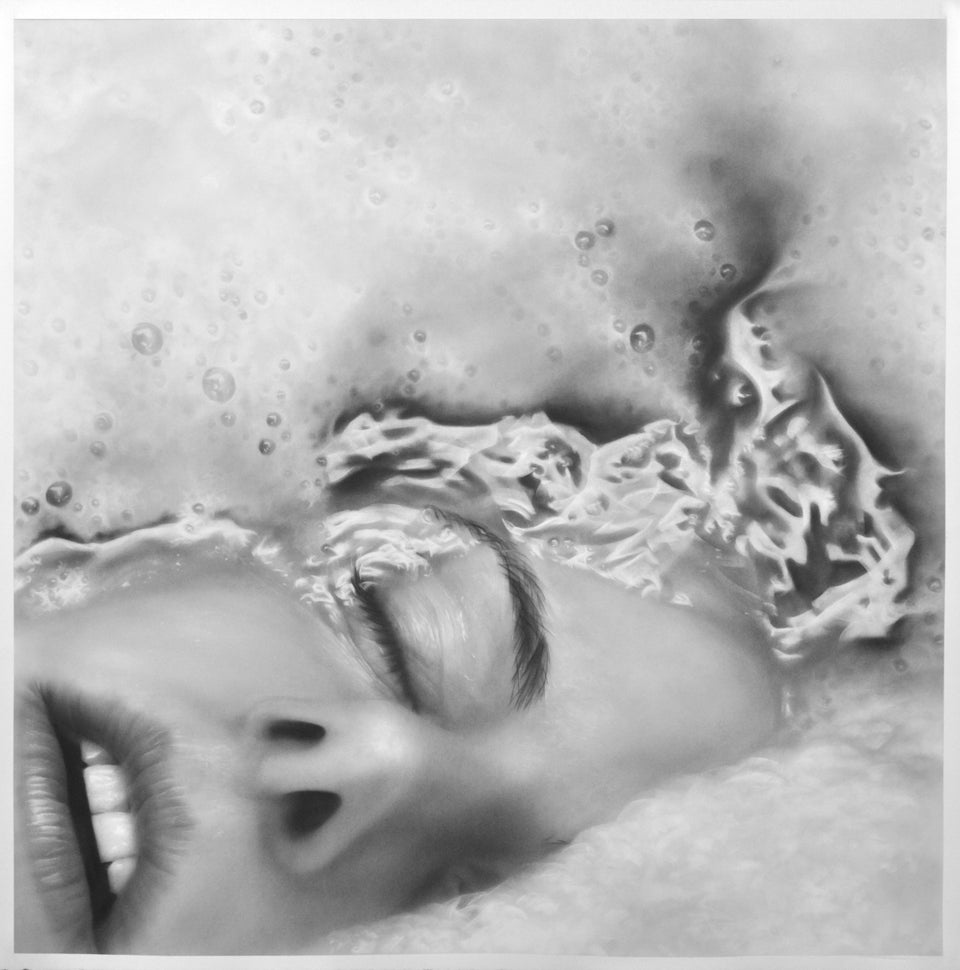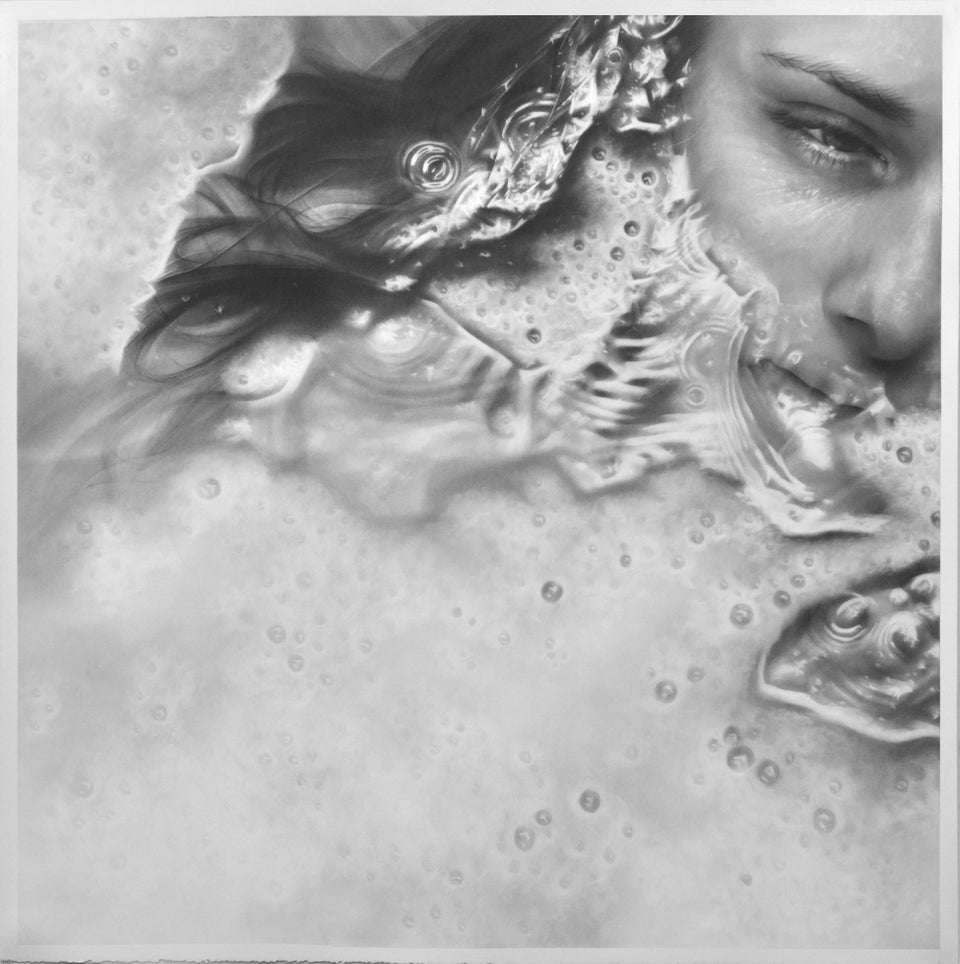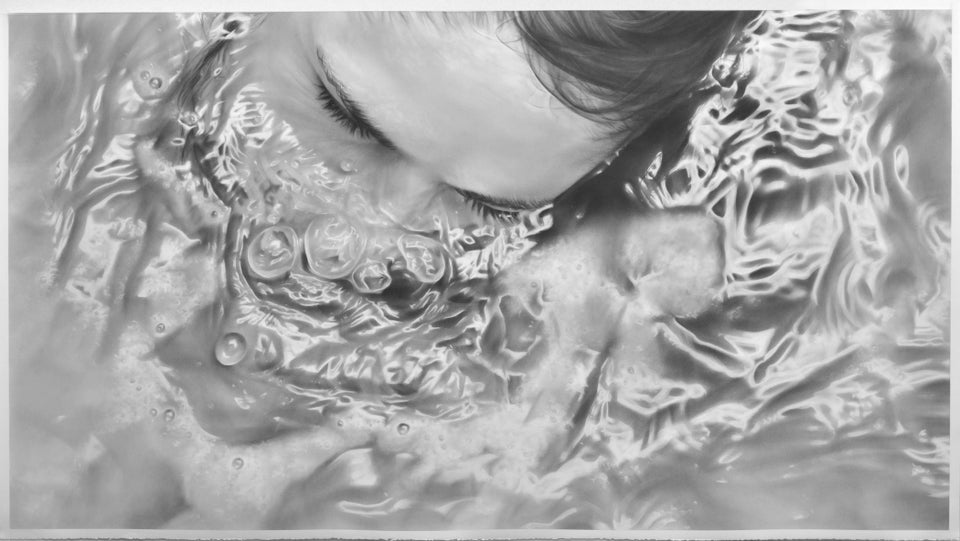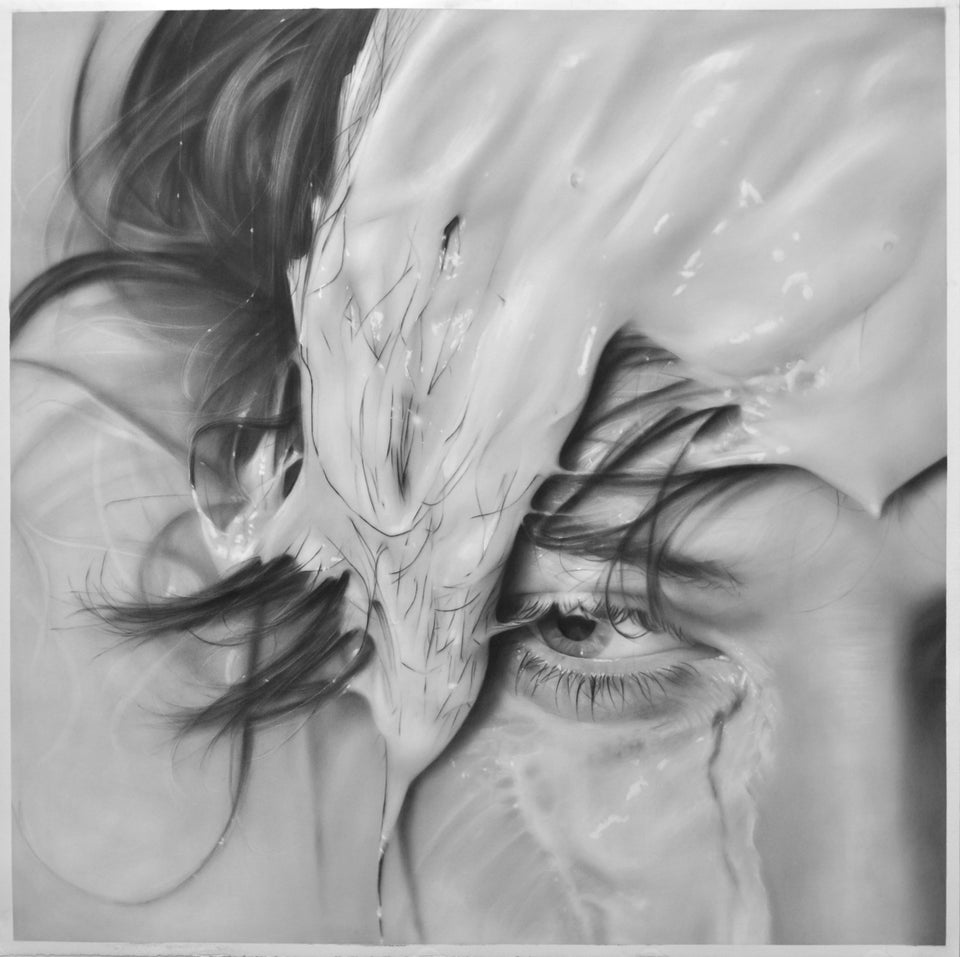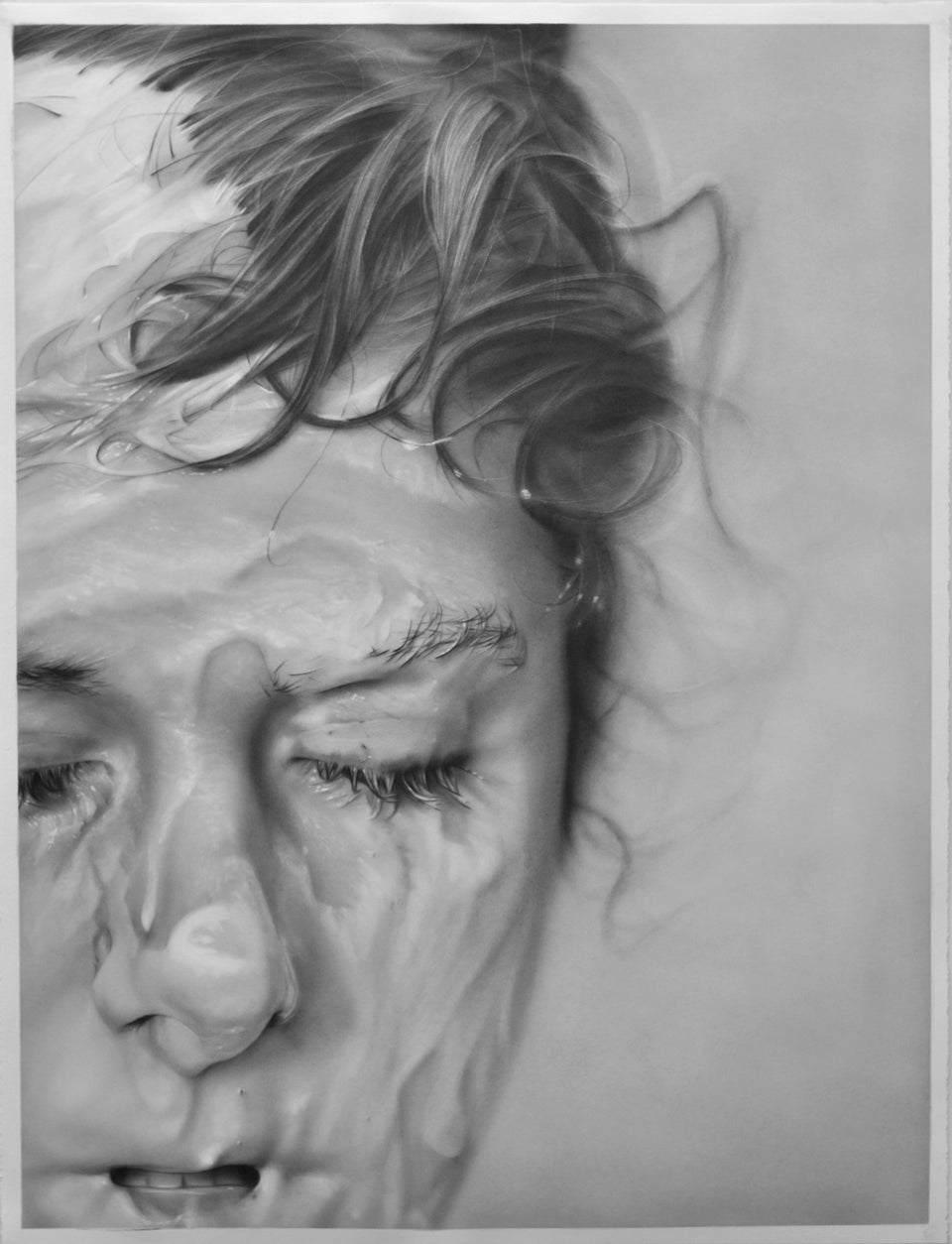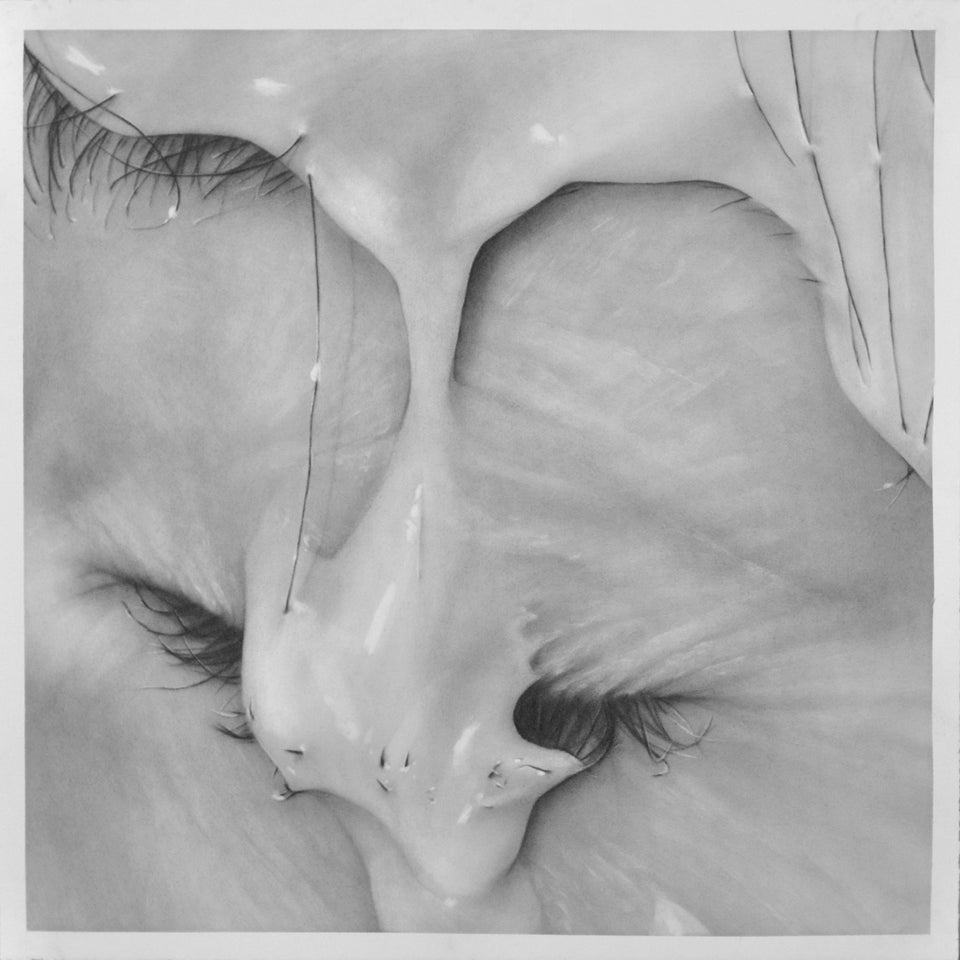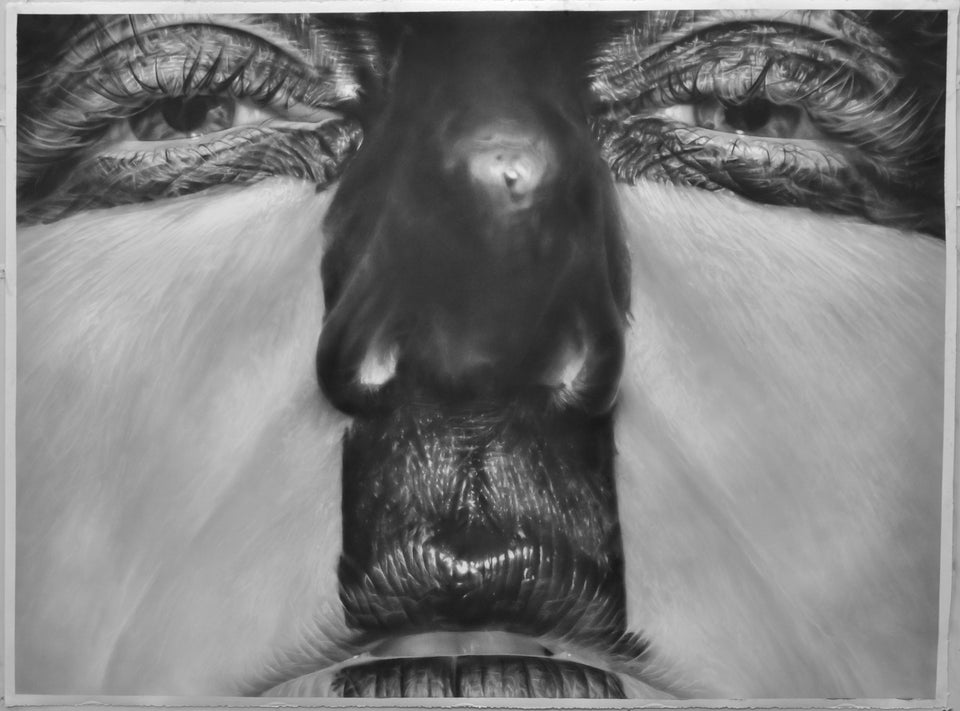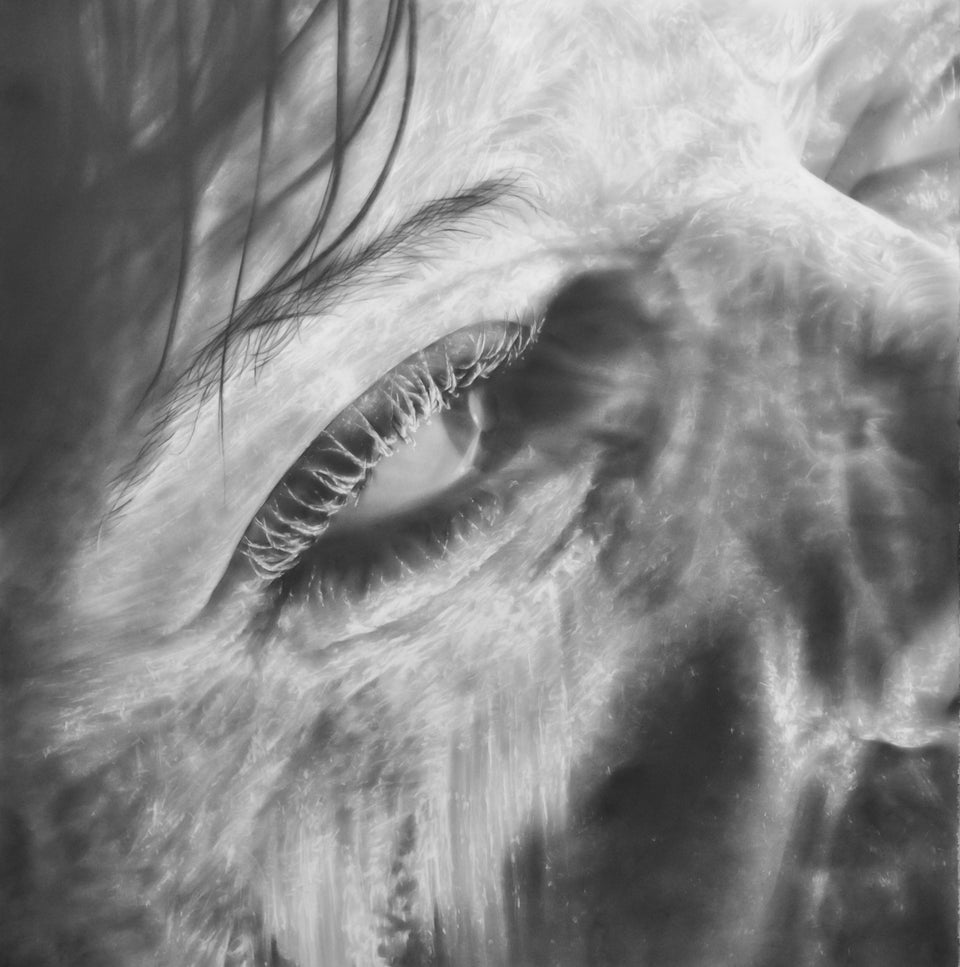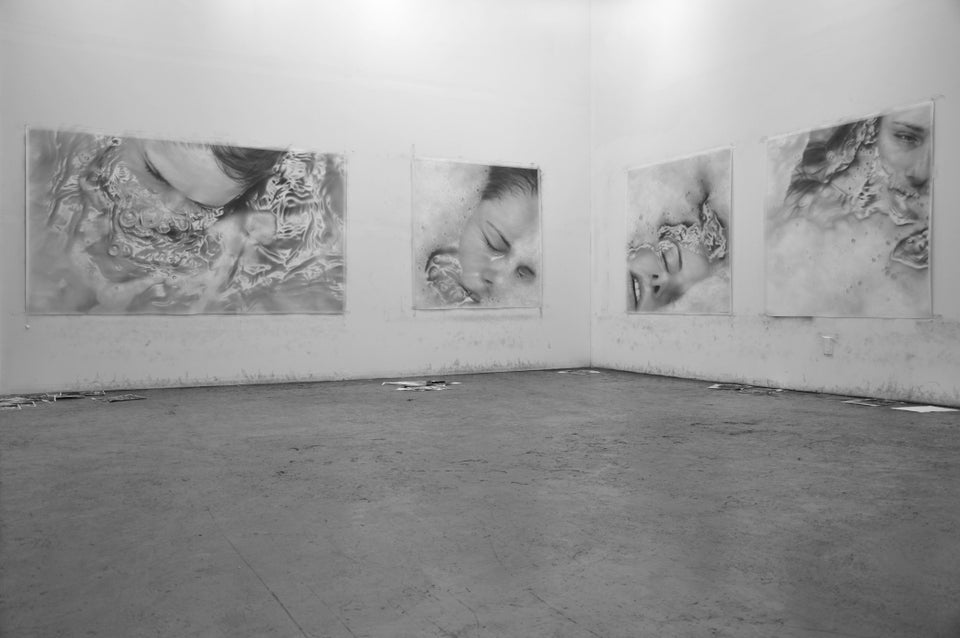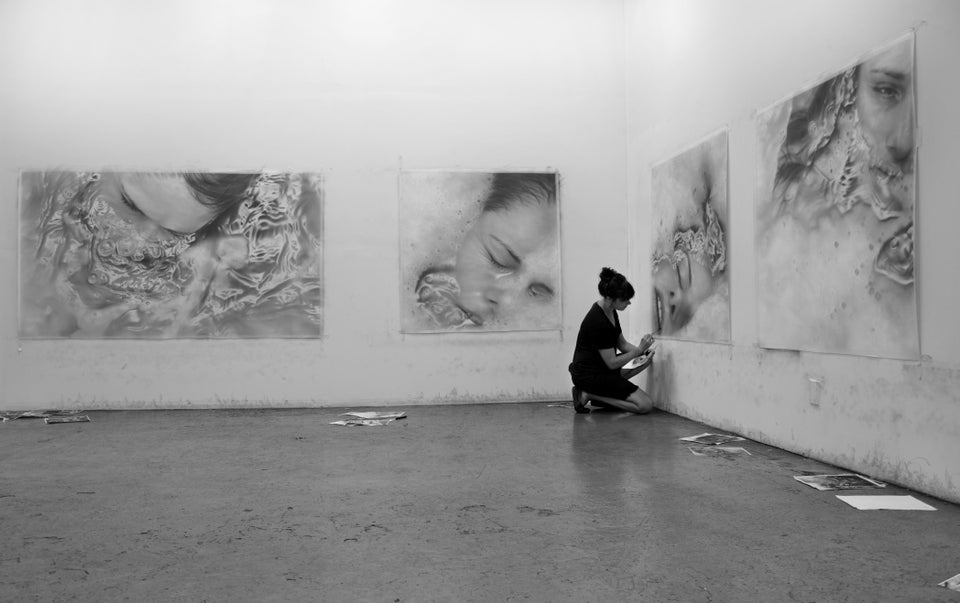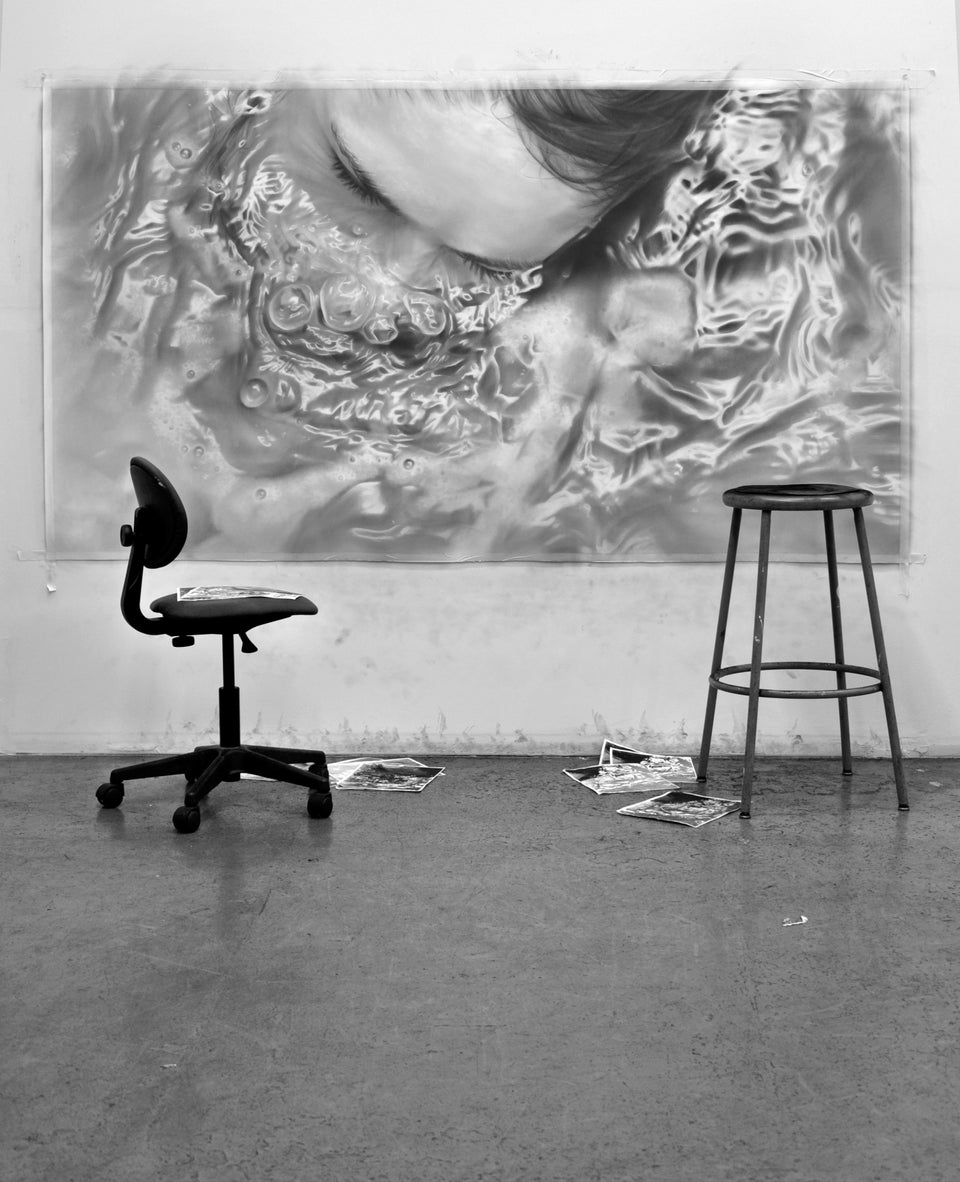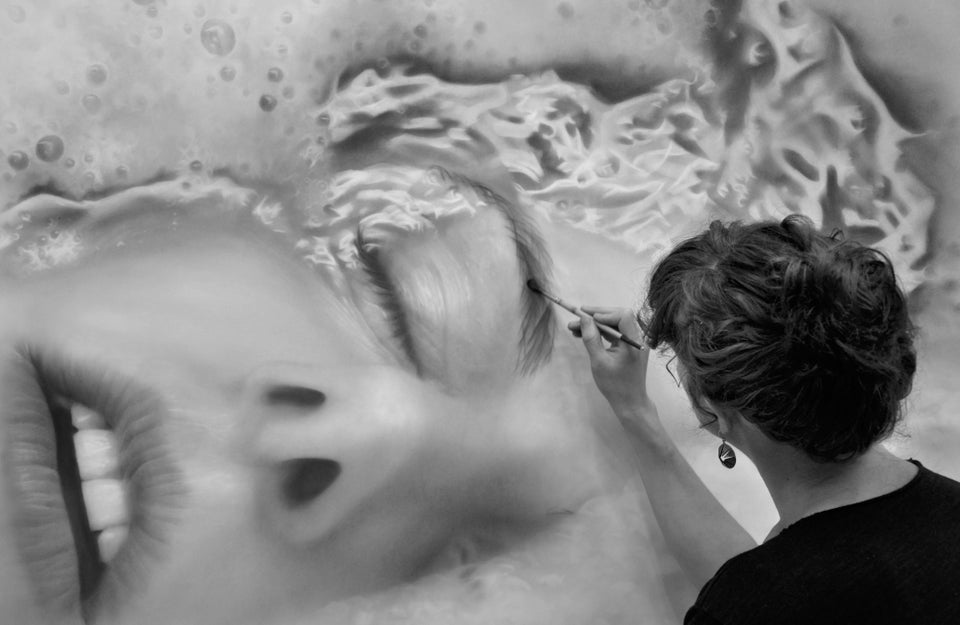
Virtual reality - Acrylic, alkyd and oil on glazed canvas, 80 x 80 cm
At first blush, Marco Grassi’s works of art look like intimate photographs, his models glancing shyly away from the camera. Their skin has a velvety fuzz and slightly mottled tone; their lips and knuckles are softly creased. Their tousled hair forms a halo of barely visible fibers around their heads.
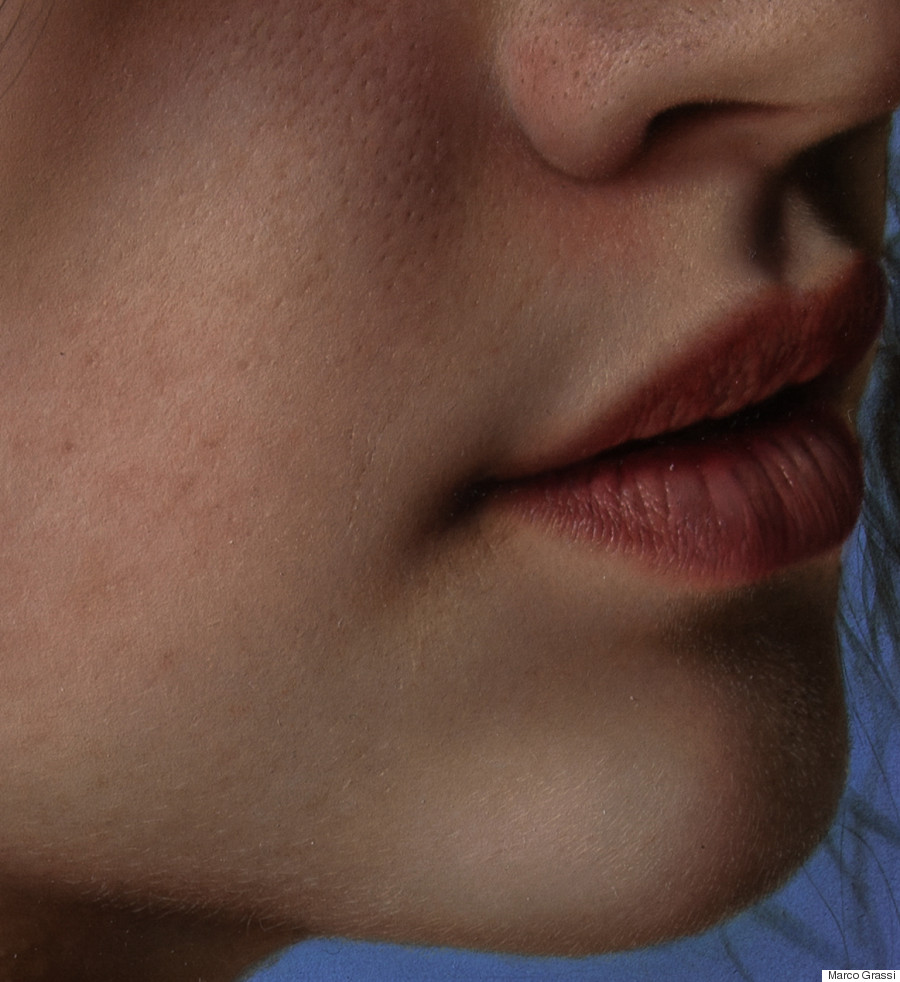
Detail, Virtual reality - Acrylic, alkyd and oil on glazed canvas, 80 x 80 cm
A second look shows something is awry; the subjects of his works, despite their freckles and pores and fly-away hairs, are like no humans ever photographed. One has a smooth porcelain back with delicate cutouts revealing a hollow torso; others have vibrant, fluorescent tattoos or greenery teeming over their skin.
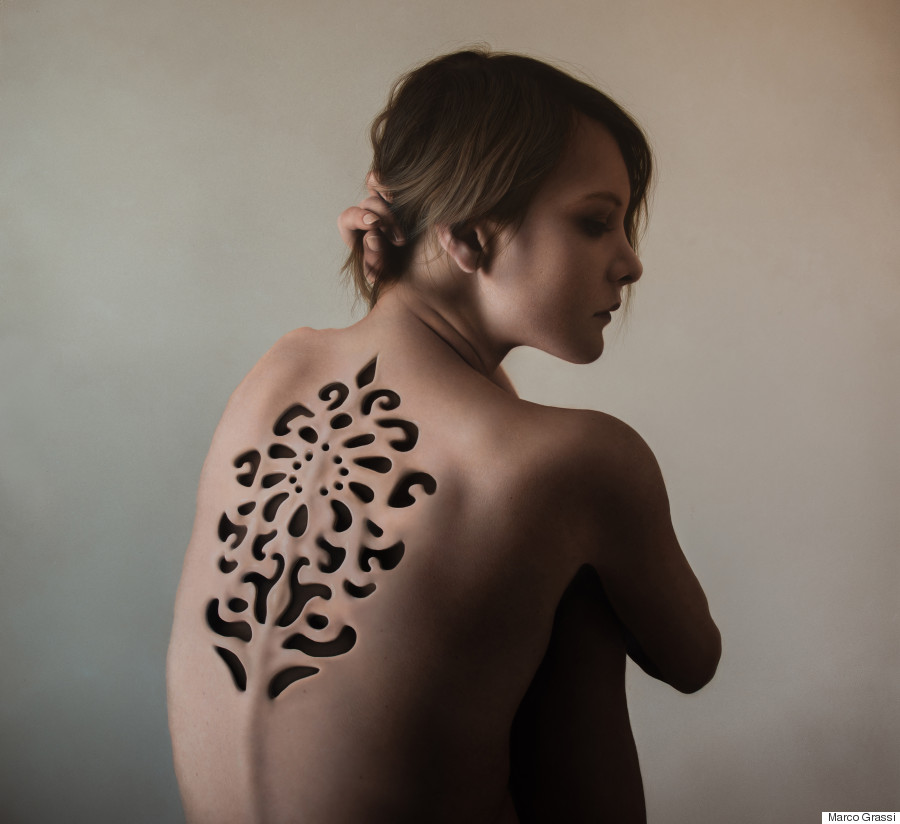
Empty Spaces - Oil on glazed canvas, 120 x 120 cm
Grassi, who terms the style of his photoreal paintings “surreal hyperrealistic,” explained in an email to The Huffington Post that he’s inspired by different textures: “I'm especially attracted to the material’s consistency, how the light catches them and how the light reflects off them just like how a precious stone, pottery or glass would.” The interplay between the living human canvas and the inhuman elements introduced to them emphasizes both the suppleness and variegated pigmentation of the body, as well as the blanched brittleness of glazed pottery or the sinuous gleam of glass sculpture.
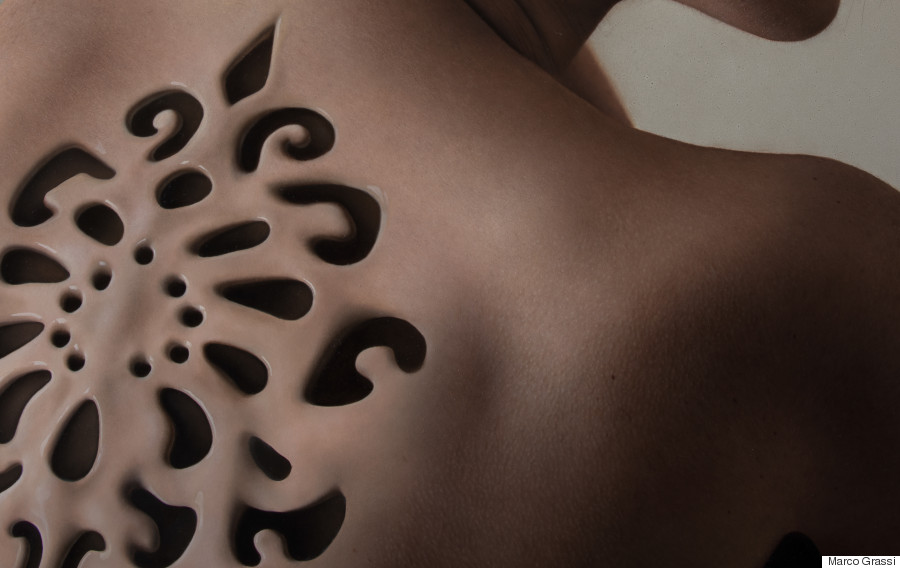
Detail, Empty Spaces - Oil on glazed canvas, 120 x 120 cm
The oil paintings juxtapose the familiar warmth and softness of the human form with colder, harsher materials, creating an eerie almost-reality. Grassi says that the contrast “allows the human body to act like a shell with a wonderful surface but with an emptiness inside.”
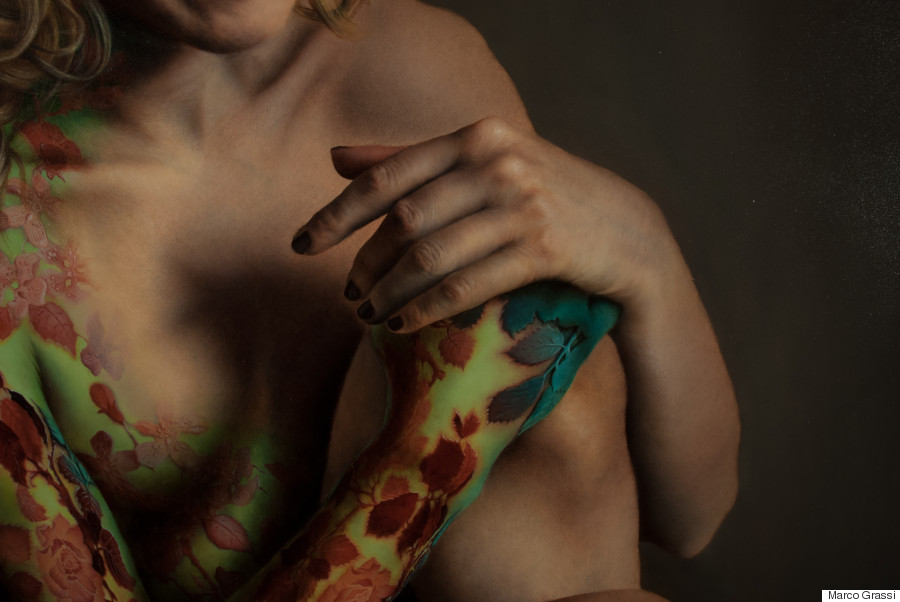
Detail, Gio B - Oil on glazed canvas, 90 x 70 cm
By combining inhuman elements with such lifelike human portraits, his paintings explode our self-deception about the humanity of what we’re viewing. The figures aren't just humans viewed as objects, but humans hollowed of their subjectivity and personhood and transformed into true decorative objects. All such realistic portraiture takes the externality of the human figure and frames it as an object, but Grassi makes this objectification of the subject undeniable.
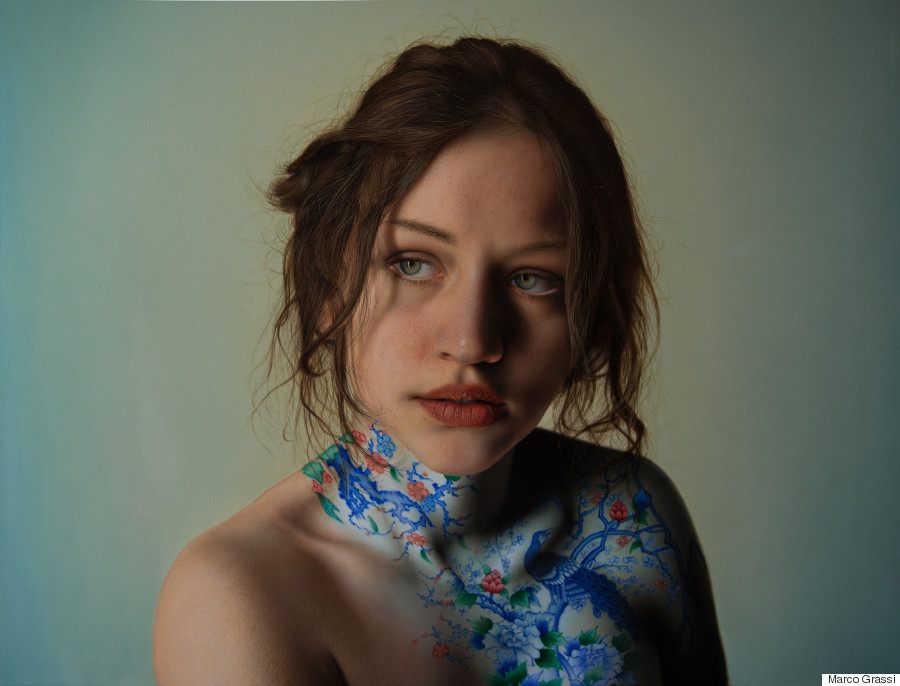
The Garden - Acrylic, alkyd and oil on glazed canvas, 70 x 80 cm

La bellezza del tempo - Acrylic, alkyd and oil on glazed canvas, 75 x 65 cm
Grassi says he spends two to three months on most of his paintings, which demand a huge investment of time due to the "complexity of the design and the technique of realization." Given the lush and photorealistic detail of the results, however, the length of time devoted to each painting almost seems short.
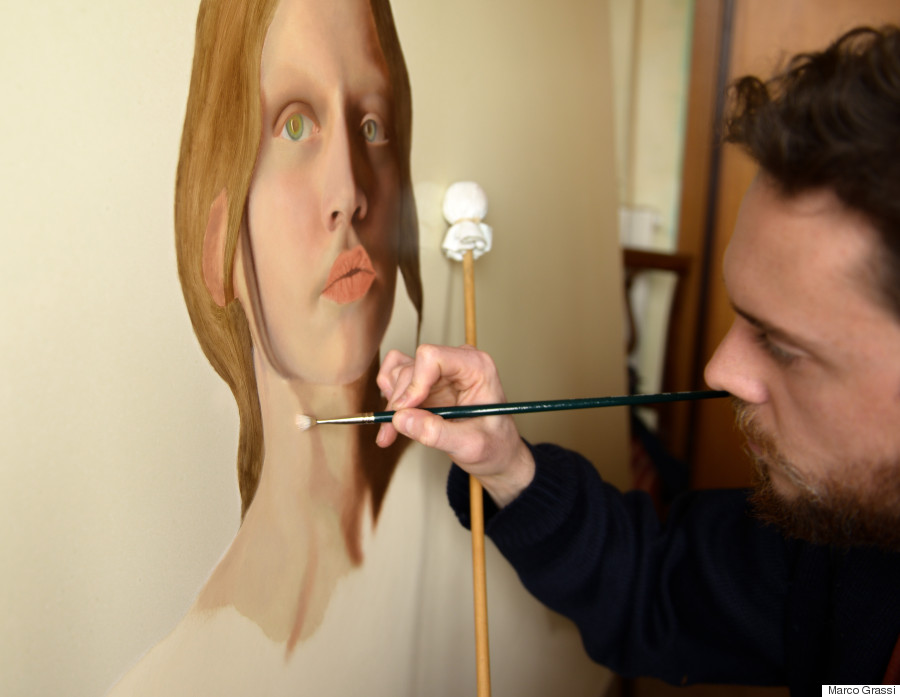
Grassi at work
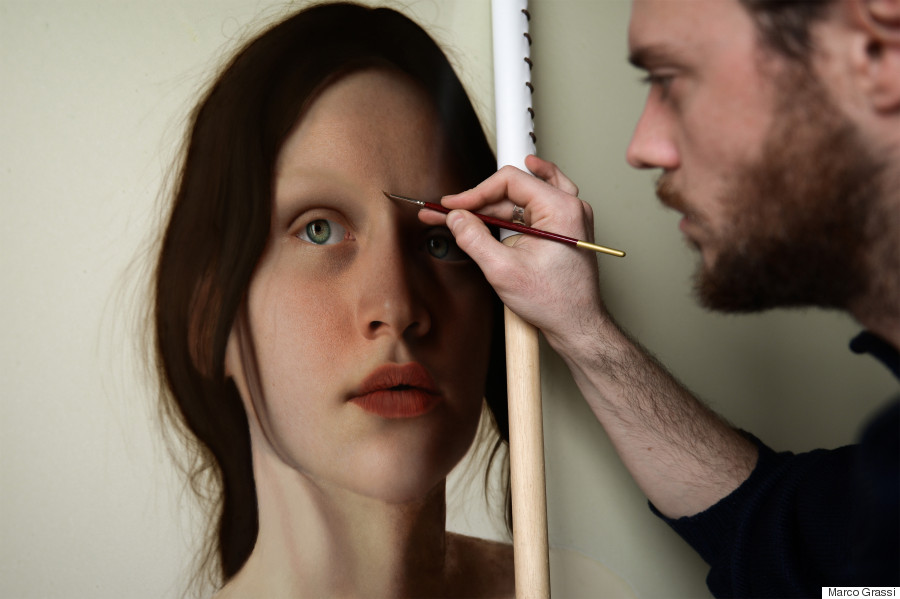
The painting takes shape
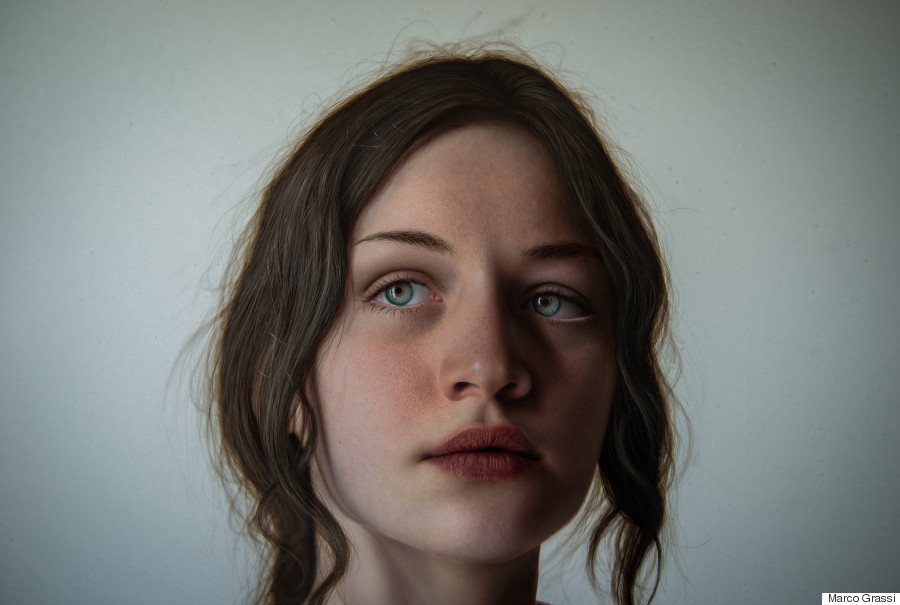
Detail from a work in progress
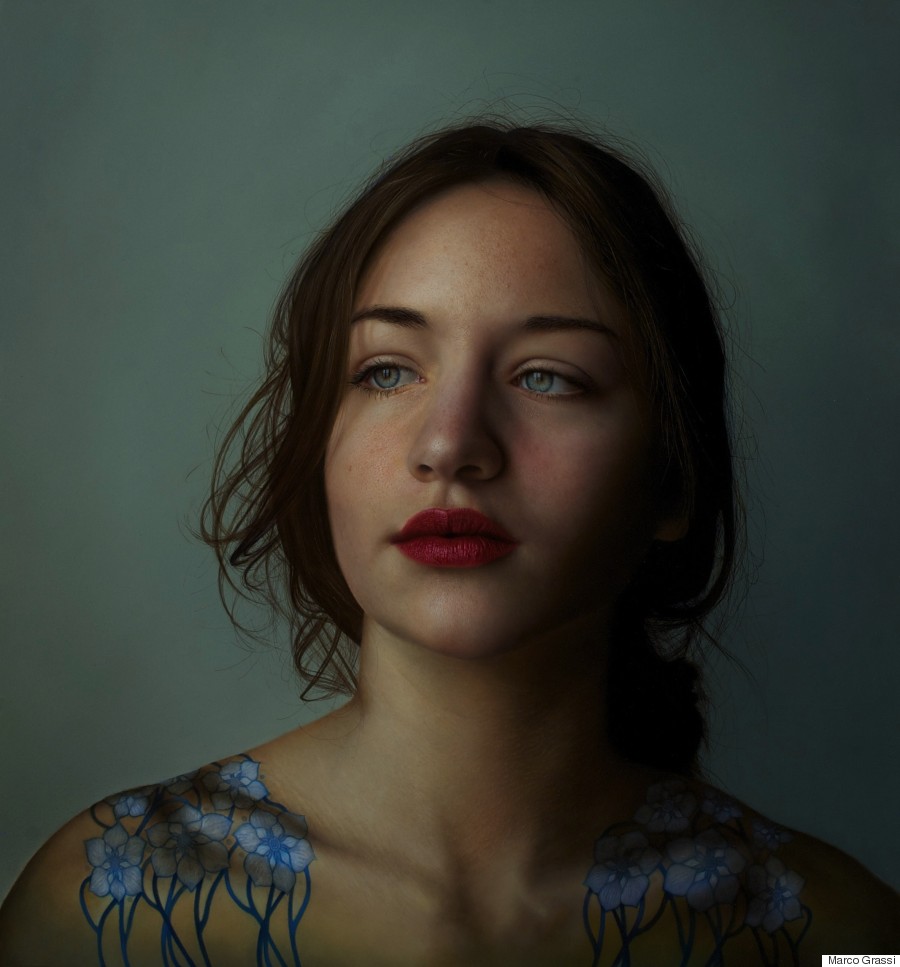
Phthalo blue green - Acrylic, alkyd and oil on glazed canvas, 60 x 50 cm

Focal Point - Oil on glazed canvas, 70 x 80 cm
Related
Before You Go
